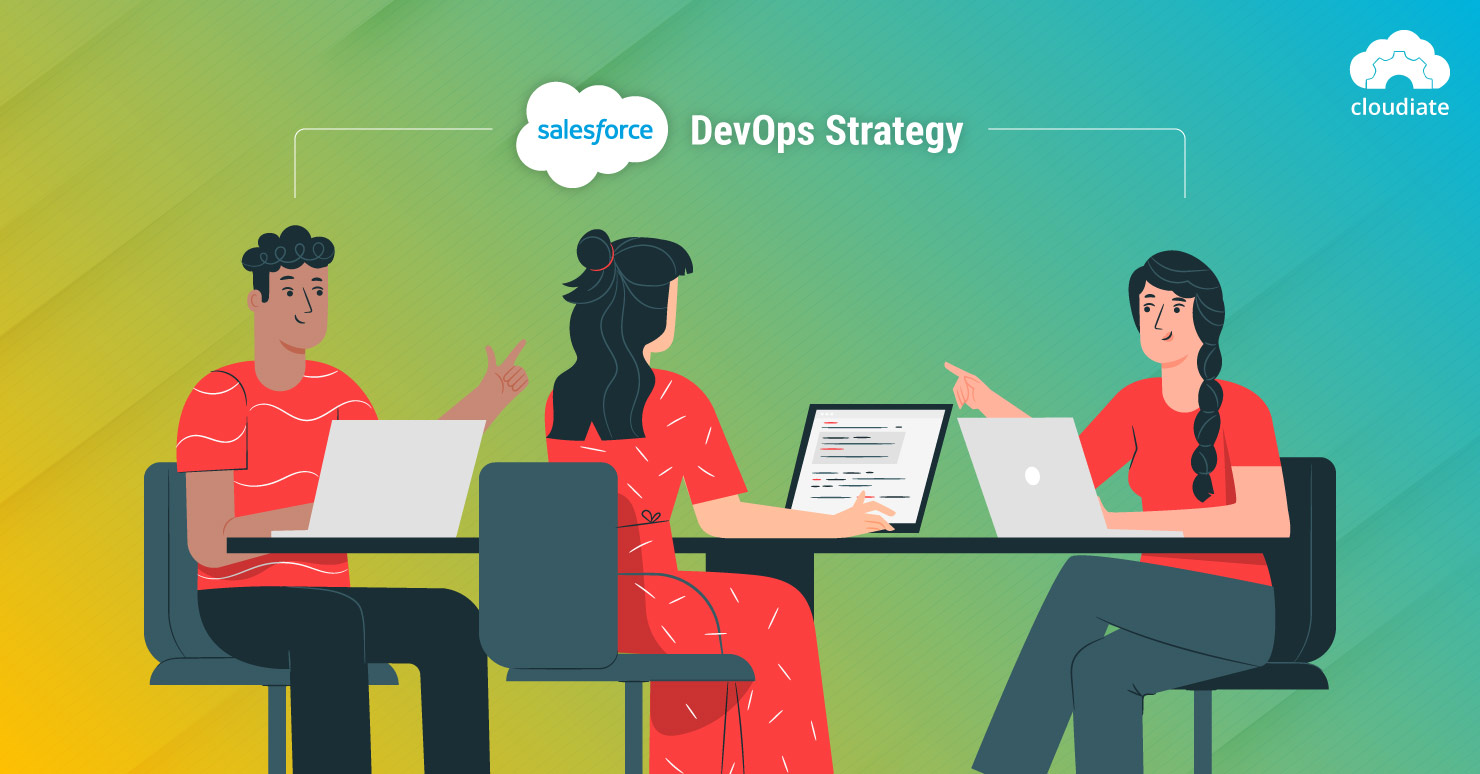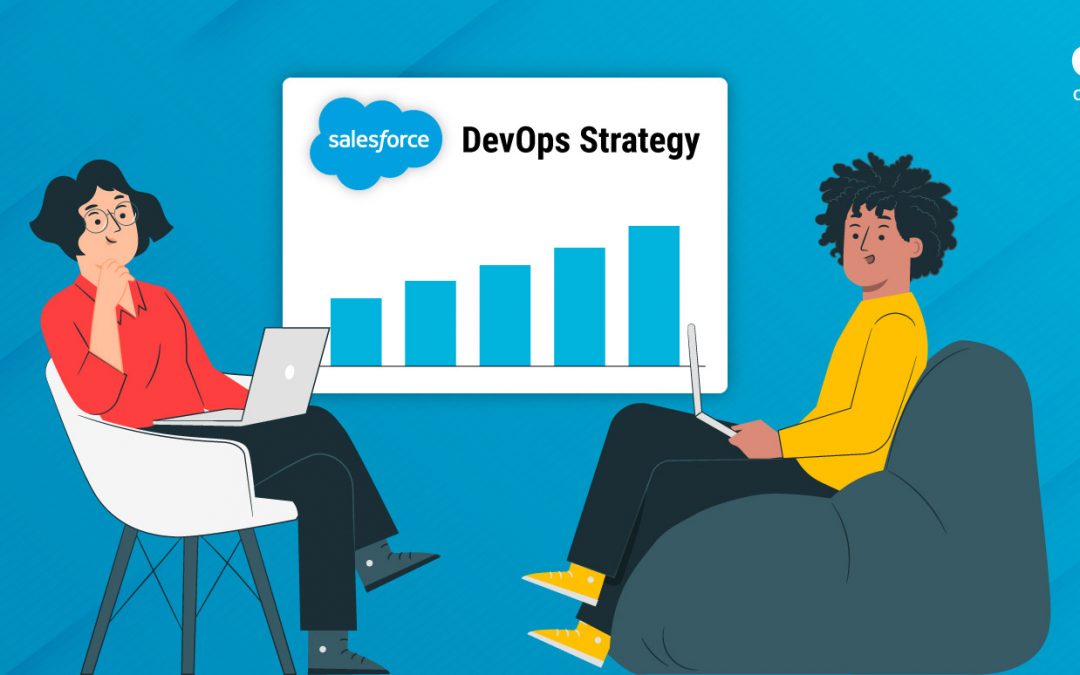Can a successful Salesforce DevOps strategy help an org grow? Is it truly necessary to maintain growth?
Businesses that are new to DevOps frequently have these genuine concerns. Against that backdrop, let’s unwrap how a sound Salesforce DevOps strategy makes business better.
Understanding Salesforce DevOps
Historically, IT operations and development were two teams that worked separately. Because they were siloed, they faced difficulties such as sluggish development and compromised outputs. DevOps (Development Operations) combines the two and creates a set of practices that are used throughout software development and delivery.
Salesforce DevOps applies these practices to the instances of a Salesforce org to enable seamless collaboration between the development and operations teams.
Consider the automated development platform a tool that simplifies, smoothes, and accelerates the release-to-production process. Essentially, when a business has a concrete DevOps strategy in place, implementing modifications or improvements takes less time. There are also fewer bugs, resulting in fewer disruptions to existing services.
How Does a Salesforce Dev Strategy Help a Business?

The basic goal of DevOps is to empower teams to work together and deliver any new feature with confidence and speed. Furthermore, it enables orgs to realize business benefits by resolving critical issues rapidly and with efficiency. A great Salesforce DevOps strategy, on the other hand, goes beyond that and contributes to the broader purpose of a business.
Suppose you’re an apparel company that produces sustainable garments from locally sourced materials. Salesforce is used by the manufacturing team to balance capacity and orders. It also is used by the sales team throughout the sales lifecycle. Salesforce is a part of your business, from the catalog to the delivery.
Say the business is growing, and your customers are evolving, demanding better designs and a better shopping app. That means your production processes must develop as well. Furthermore, selling to this new consumer base necessitates a complete redesign of the shopping app and marketing strategies.
This entails managing a team of developers and testers who are working on various features while also keeping an eye on the production team. It’s an uphill and time taking task to integrate the features into your production environment. And, because there is no version control in the sandbox environment, controlling development changes becomes more challenging.
Applying Salesforce DevOps eliminates these difficulties. It allows you to continuously plan, build, deliver, and manage innovations for a better customer experience.

1. A Good Strategy Addresses Issues
Let’s see what happens without Salesforce DevOps. When you use the typical software development scenario, creating an app that keeps business requirements a priority and not just development methods necessitate ample capital.
And that’s not it, to develop features that run fast, a lot of effort is expended. It comes down to this – with a traditional delivery team:
- Goals are either misaligned or conflicting
- Admins and developers are isolated.
- There is a lack of trust and lost work.

With a Salesforce DevOps strategy in place, these issues (and more) can be addressed:
- Teams are aligned around value streams.
- They share the same goal and have better collaborative tools.
- There is more openness and trust.
2. Quicker Turnaround
The conventional Salesforce pipeline used tools like Change Sets. These were not optimal and required a change to be migrated from development to testing to the production environment. It consumed time and was invariably error-prone. Salesforce DevOps brings with it better solutions that significantly reduce the time taken to test and launch a new feature, a whole app or even customizations.
3. More Agility
DevOps allows parallel projects. Each feature can have a separate work stream, be continuously tested and released. There are no conflicts or bottlenecks, creating a very rapid release cycle. That means, with a concrete DevOps strategy, the business is more agile, resolving challenges better and faster.
4. Better Quality
Because it involves quality assurance, a DevOps strategy assures that all new features meet the business requirements and perform effectively. There are fewer bugs and errors since testing is embedded into every level of the pipeline.
The iterative approach is another factor for higher-quality releases. Small adjustments can be implemented on a regular basis. This lowers the possibility of breaking existing functionality, or worse, creating critical problems.
5. Maximizes Salesforce ROI
At the very crux of it, the reason businesses need to have a Salesforce DevOps strategy is to harness its full potential. With it, a business can take Salesforce to the next level and enhance ROI. How so? Because DevOps empowers teams to shift their focus to actual development work rather than being preoccupied with process management.
The amount of time developers and admins spend on deploying, tracking changes, fixing errors, and syncing development and production environments are considerably decreased. When compared to teams who used the Change Set development method, the time, effort, and money saved is extensive. These resources can then be channeled to create features that boost revenue growth.
Cloudiate and Your Salesforce DevOps
According to a Google and Harvard survey, 61% of people use DevOps because it impacts the bottom line for the better. The productivity and performance of critical business tasks can be improved by implementing a concrete Salesforce DevOps.
Delivery times are shorter. Teams work better together and are more productive. Defects are discovered earlier. The product service quality is better, and overall Salesforce performance is perfected.
At Cloudiate, we help you build a Salesforce DevOps that not only focuses on the velocity of delivery but also on the quality because one without the other doesn’t lead to a great customer experience. Get in touch to improve your Salesforce innovation performance.

